Huawei Technologies M735 CDMA 1X Digital Mobile Phone User Manual
Huawei Technologies Co.,Ltd CDMA 1X Digital Mobile Phone
User Manual
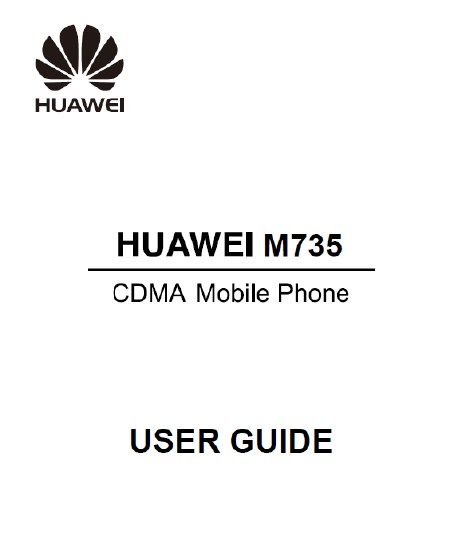
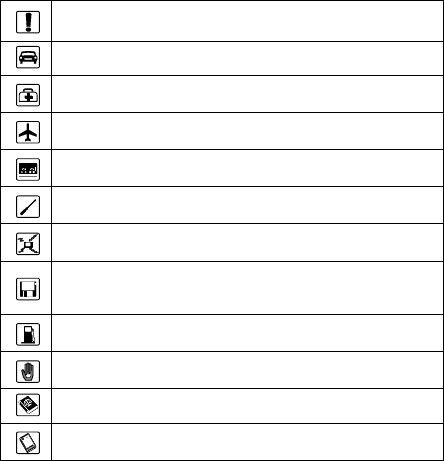
Safety Precautions
Before using the phone, read safety precautions and inform your children
about using the phone correctly and safely. For details, see "Warnings and
Precautions" on page 43.
Do not switch on your phone when using the phone is prohibited or
when using the phone may cause interference or danger.
Do not use your phone while driving.
Follow the rules or regulations set forth by the hospitals and health
care facilities. Switch off your phone near medical apparatus.
Switch off your phone in an aircraft. The phone may cause
interference to control signals of the aircraft.
Switch off your phone near high-precision electronic devices. The
phone may affect the performance of these devices.
Do not attempt to disassemble your phone or its accessories. Only
qualified personnel are allowed to service or repair the phone.
Do not place your phone or the accessories in containers with strong
electromagnetic field.
Do not place magnetic storage media near your phone. Radiation
emitted from the phone may erase the information stored on the
magnetic storage media.
Do not place your phone in a high-temperature place or where it can
come in contact with flammable gas, such as a gas station.
Keep your phone and its accessories away from children. Do not
allow children to use your phone without guidance.
Use only approved batteries and chargers to avoid explosion.
Observe the laws or regulations on using the phone. Respect others'
privacy and legal rights when using your phone.

Copyright © Huawei Technologies Co., Ltd. 2010. All
rights reserved.
No part of this document may be reproduced or transmitted in any form or
by any means without prior written consent of Huawei Technologies Co.,
Ltd.
The product described in this manual may include copyrighted software of
Huawei Technologies Co., Ltd and possible licensors. Customers shall not
in any manner reproduce, distribute, modify, decompile, disassemble,
decrypt, extract, reverse engineer, lease, assign, or sublicense the said
software, unless such restrictions are prohibited by applicable laws or such
actions are approved by respective copyright holders under licenses.
Trademarks and Permissions
, HUAWEI, and are trademarks or registered trademarks of
Huawei Technologies Co., Ltd.
Other trademarks, product, service and company names mentioned are the
property of their respective owners.
Notice
Some features of the product and its accessories described herein rely on
the software installed, capacities and settings of local network, and may
not be activated or may be limited by local network operators or network
service providers, thus the descriptions herein may not exactly match the
product or its accessories you purchase.
Huawei Technologies Co., Ltd reserves the right to change or modify any
information or specifications contained in this manual without prior notice
or obligation.
NO WARRANTY
THE CONTENTS OF THIS MANUAL ARE PROVIDED "AS IS".
EXCEPT AS REQUIRED BY APPLICABLE LAWS, NO WARRANTIES
OF ANY KIND, EITHER EXPRESS OR IMPLIED, INCLUDING BUT
NOT LIMITED TO, THE IMPLIED WARRANTIES OF
MERCHANTABILITY AND FITNESS FOR A PARTICULAR PURPOSE,
ARE MADE IN RELATION TO THE ACCURACY, RELIABILITY OR
CONTENTS OF THIS MANUAL.
TO THE MAXIMUM EXTENT PERMITTED BY APPLICABLE LAW,
IN NO CASE SHALL HUAWEI TECHNOLOGIES CO., LTD BE
LIABLE FOR ANY SPECIAL, INCIDENTAL, INDIRECT, OR
CONSEQUENTIAL DAMAGES, OR LOST PROFITS, BUSINESS,
REVENUE, DATA, GOODWILL OR ANTICIPATED SAVINGS.
Import and Export Regulations
Customers shall comply with all applicable export or import laws and
regulations and will obtain all necessary governmental permits and licenses
in order to export, re-export or import the product mentioned in this
manual including the software and technical data therein.
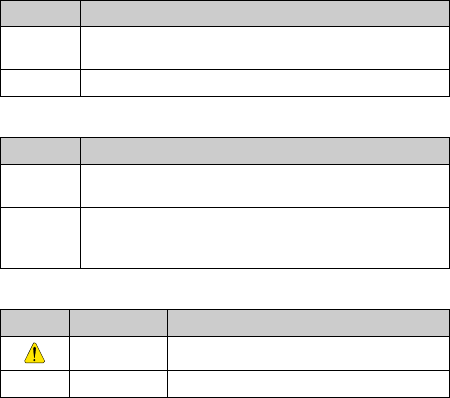
Conventions
Term Conventions
This manual refers to HUAWEI M735 CDMA mobile phone as "the
phone" or "your phone".
Operation Conventions
Operation
Meaning
Press and
hold
Press a key for two to three seconds and then release it.
Press
Press a key and release it quickly.
GUI Conventions
Format
Meaning
Bold
Any string displayed on the phone screen is in boldface,
such as "Messages".
>
Multi-level menus are spearated by ">". For example,
"Messages > MMS" indicates "MMS" is the submenu of
"Messages".
Symbols
Symbol
Description
Meaning
Caution
Warnings and precautions for operations
Note
Complementary descriptions for operations
i
Table of Contents
1 Getting to Know Your Phone ............................................ 1
Your Phone ........................................................................................ 1
Keys and Functions ........................................................................... 2
Screen Icons ...................................................................................... 4
2 Getting Started ................................................................... 6
Installing the Battery ......................................................................... 6
Charging the Battery .......................................................................... 6
Powering On/Off the Phone ............................................................... 7
Using the Stylus................................................................................. 7
Dragging and Flicking ....................................................................... 8
Standby Screen .................................................................................. 9
3 Voice Services ................................................................... 11
Making a Call .................................................................................. 11
Answering a Call ............................................................................. 11
Operations During a Call ................................................................. 12
4 Text Entry ......................................................................... 14
On-Screen Keyboard Mode ............................................................. 14
5 SMS ................................................................................... 15
Writing and Sending a Message....................................................... 15
Reading a Message .......................................................................... 16
ii
6 MMS .................................................................................. 17
Writing and Sending a Multimedia Message ................................... 17
Receiving a Multimedia Message .................................................... 17
Viewing a Multimedia Message....................................................... 18
7 Contacts ............................................................................ 19
Adding a Contact ............................................................................. 19
Searching for a Contact ................................................................... 19
8 @metro App Store ........................................................... 21
Accessing @metro App Store .......................................................... 21
Changing Your @metro App Store Settings ..................................... 22
Using On-line Help ......................................................................... 22
9 Alarm Clock...................................................................... 25
Enabling an Alarm Clock ................................................................ 25
Disabling an Alarm Clock ............................................................... 25
10 Music Player ................................................................... 26
Adding a Playlist ............................................................................. 26
Playing Music .................................................................................. 26
11 Camera ............................................................................ 30
Taking a Picture ............................................................................... 30
Viewing a Picture ............................................................................ 31
Taking Pictures Sequentially ........................................................... 33
Taking a Picture in Self-Timer Mode ............................................... 33
Setting a Picture Effect .................................................................... 33
iii
12 Security ........................................................................... 34
Enabling or Disabling the Phone Lock ............................................ 34
Changing the Phone Lock Code ...................................................... 34
Locking the Keypad ........................................................................ 35
13 Bluetooth Connection ..................................................... 36
Sending Data Through a Bluetooth Connection ............................... 36
Receiving Data Through a Bluetooth Connection ............................ 37
Listening to Music Through a Bluetooth Stereo Headset ................. 38
Sending a Contact Through a Bluetooth Connection ....................... 39
Other Bluetooth Operations ............................................................. 39
14 TTY Operation ............................................................... 40
Using the TTY Device ..................................................................... 40
Setting the TTY Mode ..................................................................... 40
15 Troubleshooting.............................................................. 41
16 Warnings and Precautions ............................................ 43
17 Futurewei Technologies, Inc. Limited Warranty ........ 52
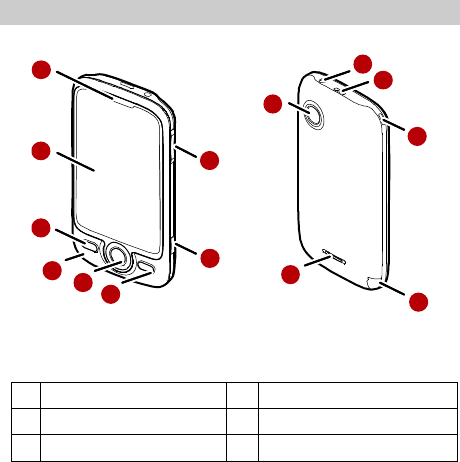
1
1 Getting to Know Your Phone
Your Phone
12
13
14
9
10
11
1
8
2
3
7
4
6
5
1
Earpiece
8
Volume Keys
2
Screen
9
Camera
3
Talk/Send Key
10
Speaker
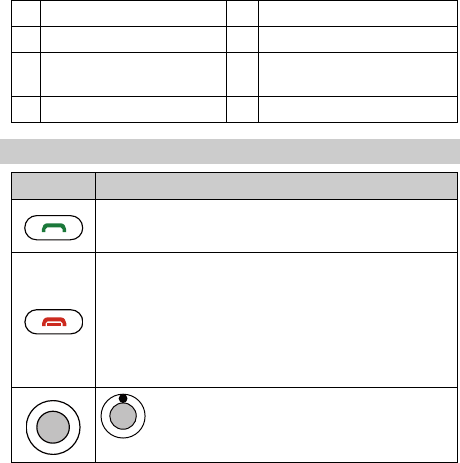
2
4
Microphone
11
Stylus Pen
5
Navigation Keys
12
Strap Hole
6
End/Power Key
13
Charger Interface/Data Cable
Connecter
7
Camera Key
14
Headset Jack
Keys and Functions
Press …
To …
Access the all calls menu in standby mode.
Dial a number or answer a call.
Power on or power off the phone by pressing and
holding the key.
End a call or reject a call.
Return to the standby screen.
Turn on or turn off the screen backlight in standby
mode.
: Access Contacts in standby mode; increase the
volume during a call.
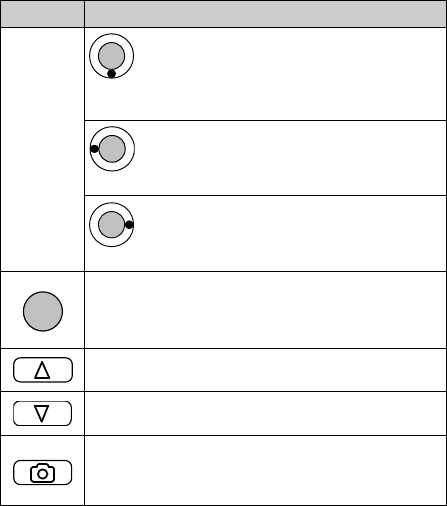
3
Press …
To …
: Access the Messages menu in standby mode;
access the screen for writing a message by pressing and
holding the key; decrease the volume during a call.
: Access metroWEB in standby mode; decrease
the volume during a call.
: Access @metro App Store in standby mode;
increase the volume during a call.
Access the main menu in standby mode.
Confirm a selection in menu mode.
Start playing music after the music player is launched.
Increase the volume in standby mode or during a call and
music playing.
Decrease the volume in standby mode or during a call and
music playing.
Launch the camera in standby mode by pressing and
holding the key.
Take a picture after the camera is launched.
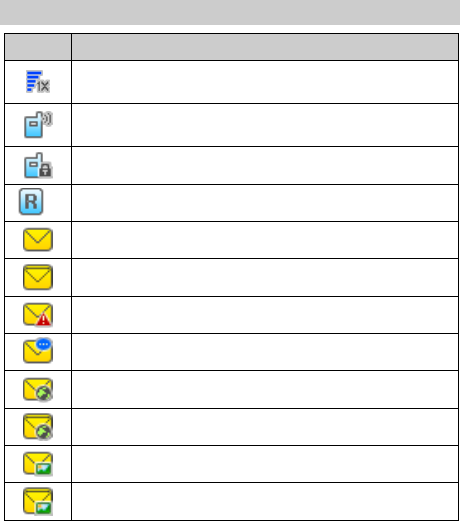
4
Screen Icons
Icon
Description
Indicates the signal strength. The more the bars are, the
stronger the signal is.
There is an incoming call; a call is being set up; or the phone
is in conversation.
The voice privacy function is enabled.
The phone is in the roaming status.
A new message is received.
The memory for messages is full.
An urgent message is received.
A new voice mail is received.
A new PUSH message is received.
The PUSH message is full.
A new MMS is received.
The MMS is full.
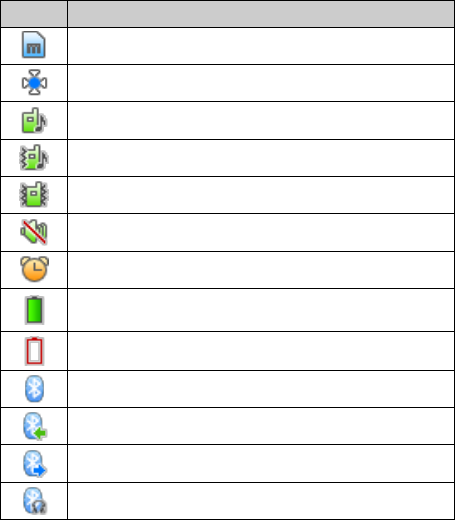
5
Icon
Description
MicroSD Card.
The AGPS indicator mode is Location On.
The alert type is Ring.
The alert type is Ring & Vibration.
The alert type is Vibration.
The alert type is Silence.
An alarm clock is set.
Indicates the battery power level. The more the bars are, the
higher the remaining battery level is.
The battery power level is extremely low.
The Bluetooth function is activated.
The phone is receiving date through Bluetooth.
The phone is sending data through Bluetooth.
The Bluetooth headset is activated.
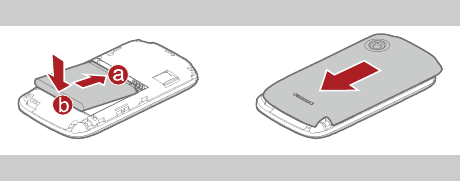
6
2 Getting Started
Installing the Battery
Charging the Battery
To charge the battery, do as follows:
1. Connect the travel charger to the charger interface at the top of your
phone.
2. Connect the charger to an AC power socket.
During the charging process, the icon on the upper right corner of the
screen is in an animated status.
3. Wait until the phone is completely charged.
If the icon becomes static, the battery is completely charged.
4. Disconnect the charger from the AC power socket.
5. Disconnect the charger from the phone.
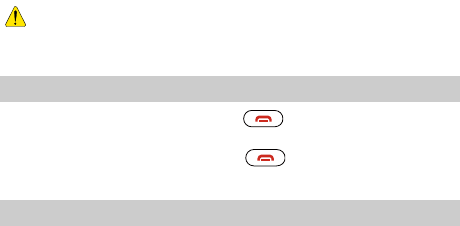
7
Do not use a damaged battery or charger.
Before using the travel charger, ensure that the battery is
installed in your phone.
Powering On/Off the Phone
To power on the phone, press and hold until the screen backlight is
on.
To power off the phone, press and hold until the power-off prompt
is displayed.
Using the Stylus
You can use the stylus to select an item by tapping on the touch screen of
your phone.
Stylus Operations
To perform an operation with the stylus, you can do as follows:
Tap: Select an item or display a menu by touching the stylus to the
screen.
Drag: Select multiple characters in on-screen keyboard mode or move
an object by moving the stylus on the screen.
Screen Calibration
When operating the phone with the stylus, if the phone cannot respond to
your operation correctly, you can calibrate the screen as follows:
Tap Settings > Display Settings > Screen Calibration to access the
screen for calibration.
Calibrate the screen by tapping the center of + displayed on the screen
according to the instructions.

8
During the calibration, tap the center of + accurately, to ensure
that the phone can respond to your tap and text entry on the
screen correctly after the calibration.
Dragging and Flicking
On following screens, you can perform some operations conveniently
through dragging on the touch screen:
On the standby screen, tap and drag the title, clock, or date to change the
position of the selected item.
In the menu list, drag up or down to scroll. Then tap a submenu to select
it.
When viewing pictures, flick right or left to switch a picture to the next
or previous one.
The resolution of the phone screen is 240 × 320. Therefore,
when viewing pictures, a picture with a resolution higher than
240 × 320 may be displayed improperly.
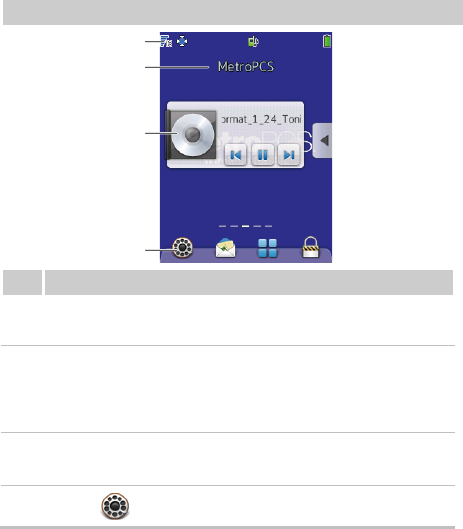
9
Standby Screen
1
2
3
4
Description
1
The icons indicating the status, such as the signal strength,
battery level, and current profile are displayed.
2
By default, the name of the network operator is displayed.
You can tap it to set a customized title.
Tap Settings > Display Settings > Banner to change the title
content.
3
The information about the playing music player is displayed.
Tap this area to access the music player.
4
Tap to access the dialer.

10
Description
Tap to access Messages.
Tap to access the main menu.
Tap to lock the keypad.
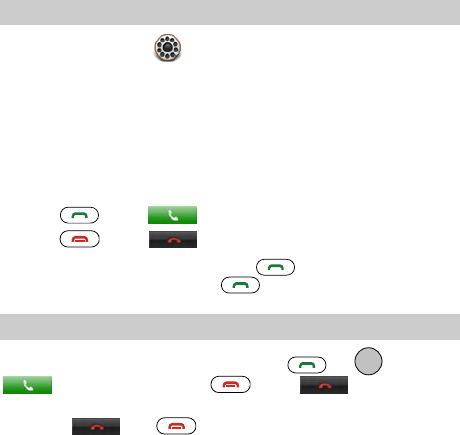
11
3 Voice Services
Making a Call
1. In standby mode, tap to access the dialer.
2. Enter the phone number on the dialer.
For international calls, tap * twice consecutively to enter the plus sign
(+). Then enter the country or region code, area code, and phone number
in sequence.
For extension numbers, enter the phone number, tap * three or four
times consecutively to enter P or T, and then enter the extension
number.
3. Press or tap to dial the number.
4. Press or tap to end the call or cancel the dialing.
In standby mode, you can press to view call logs. Then
select a number and press to dial the number.
Answering a Call
When there is an incoming call, you can press or , or tap
to answer the call; press or tap to reject the call.
When the any-key answer function is enabled, you can press any key
(except and ) to answer the call.
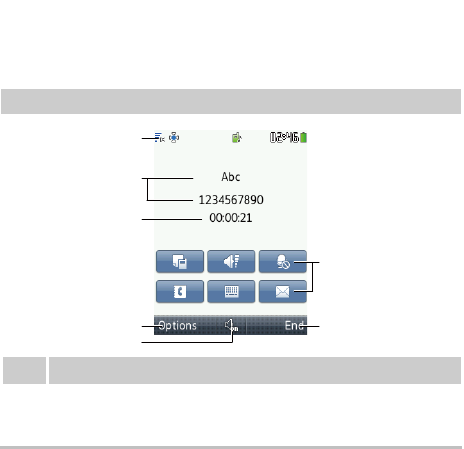
12
When the Headset Auto Answer function is enabled and the headset is
properly connected to the phone, the phone answers the call
automatically.
The Headset Auto Answer function is available only when a wired
headset is used.
You can set the any-key answer function in the Settings > Call
Settings > Answer Mode, and set the headset auto-answer
function in the Settings > Call Settings > Headset Auto
Answer.
Operations During a Call
1
2
3
6
7
4
5
Description
1
The icons indicating the status, such as the signal strength,
battery level, and current profile, and the current time are
displayed.
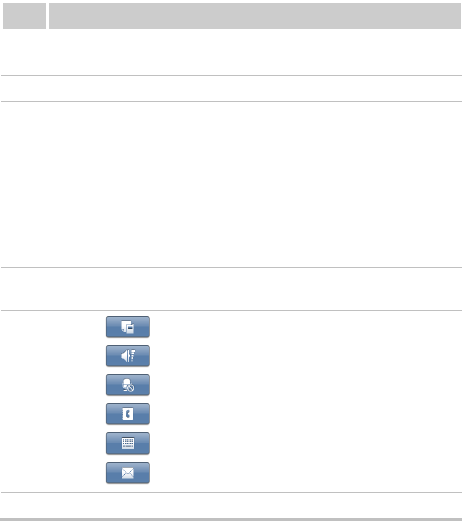
13
Description
2
The contact name and the number of an ongoing call are
displayed.
3
Call duration is displayed.
4
Select Options for the following options:
Mute: Mute the microphone.
Save Number: Save the number to contacts.
Contacts: Search for or create a contact.
SMS: Access the Messages menu.
Memo: Write information during a call.
Voice Privacy: Enable voice encryption.
TTY Setup: Setting the TTY mode.
5
Tap this icon to switch between the hands-free mode and the
hand-held mode.
6
Tap to access the Memo menu.
Tap to access the screen for adjusting the volume.
Tap mute the microphone.
Tap to access the Contacts menu.
Tap to display the on-screen keyboard.
Tap to access the SMS menu.
7
Select End to end the call.
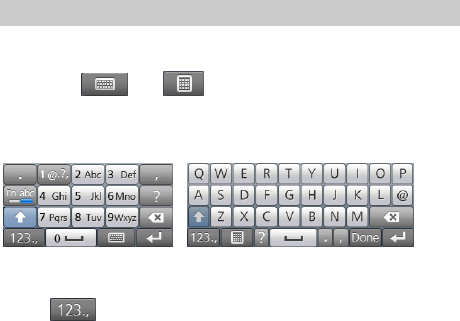
14
4 Text Entry
On-Screen Keyboard Mode
The phone supports two types of on-screen keyboards: QWERTY
keyboard and numeric keypad.
You can tap and to switch between the QWERTY
keyboard and the numeric keypad.
In on-screen keyboard mode, one of the following bar is displayed at the
bottom of the screen.
Tap keys on the on-screen keyboard to enter corresponding letters,
numbers, or symbols.
Tap to enter numbers or symbols through the on-screen
keyboard.
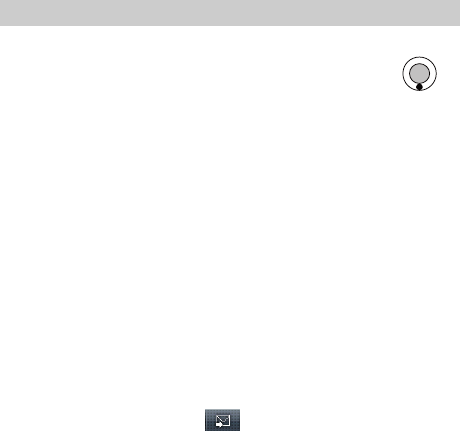
15
5 SMS
Writing and Sending a Message
To write and send a text message, do as follows:
1. Select Messages > SMS > Create Message, or press and hold .
2. Write a message and then select Options for the following options:
Send: Send the message.
Save: Save the message to Drafts.
Copy: Select Mark and Copy or Copy All to copy the desired text.
Insert Quick Text: Insert a commonly used phrase into the message.
Insert Contact: Select a contact from the phonebook and insert the
phone number into the message.
Insert Shortcut: Insert a preset website-related symbol into the
message.
Priority: Set the message priority that can be Normal, Urgent, or
Emergency.
Callback Number: Set the callback number. The callback number will
be sent to the message recipient with the message. You can set it to
either your phone number or another number. After receiving your
message, the recipient can call you back though the callback number.
3. Select Options > Send or tap to add the recipient(s) of the
message. Up to 10 recipients can be added by using one of the following
methods:
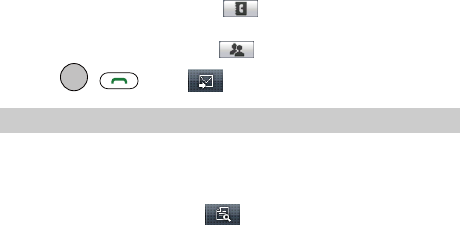
16
Enter the phone number(s) of the recipient(s) directly.
Select Search > Contacts or tap to select the recipients from the
phonebook.
Select Search > Groups or tap to select a group of recipients.
4. Press , or tap to send the message.
Reading a Message
Inbox stores the received text messages. To read a text message in the
inbox, do as follows:
1. Select Messages > SMS > Inbox.
2. Select Options > View or tap to select and read the desired
message.
3. Select Options for the following options:
Reply: Write a new text message to reply to the message sender.
Delete: Delete the message.
Forward: Forward the message.
Extract Number: Extract the number(s) contained in the message.
Extract URL: Extract the URL address(es) contained in the message.
Extract Email: Extract the email address(es) contained in the message.
Lock/Unlock: When a text message is saved in the phone memory, you
can lock the message to prevent it from being deleted. To unlock the
message, you can select Unlock.

17
6 MMS
Writing and Sending a Multimedia Message
To write and send a multimedia message, do as follows:
1. Select Messages > MMS > Create Message.
2. Edit the message by adding contents to the following fields:
To: Add the recipient(s) of the message. Up to 10 recipients can be
added.
Sub: Enter the subject of the message.
Text field & Media field: Insert pictures, audio files, video files, and
text into a slide.
3. After you write the message, select Options > Send to send the
message.
The MMS function is network dependent. If you cannot send or
receive multimedia messages, contact your service provider.
Receiving a Multimedia Message
If you select Messages > MMS > Settings > Receive Settings > Retrieval
Mode > Manual, a message notification will be received and saved in the
inbox before you receive a multimedia message. In this case, access the
inbox, select the message notification, and then download the multimedia
message according to the on-screen instructions.
If you select Messages > MMS > Settings > Receive Settings > Retrieval
Mode > Automatic, the phone will automatically download a multimedia
message to the inbox.
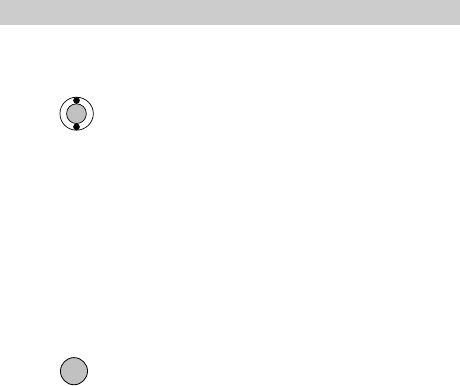
18
Viewing a Multimedia Message
Inbox stores the received multimedia messages. To view a multimedia
message in the inbox, do as follows:
1. Select Messages > MMS > Inbox.
2. Press to select a message.
3. Select Options for the following options:
Reply: Write a new message to reply to the message sender.
Delete: Delete the message.
Create Message: Write a new message.
Call: Call the recipient, or edit the recipient’s number and then dial the
number.
Delete Multiple: Delete multiple multimedia messages at a time.
Sort By: Sort the messages in the inbox according to date, sender,
read/unread or message type.
Message Details: View details of the message.
4. Press to view the contents of the message.
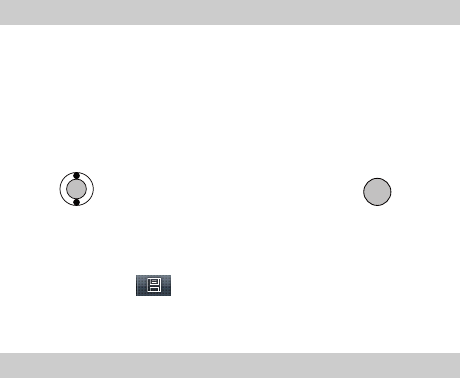
19
7 Contacts
Adding a Contact
To add a contact to the phonebook, do as follows:
1. Select Contacts > Add New.
2. Enter the information about the contact. Information can be entered in
the following fields, including Name, Mobile Number, Home Number,
Office Number, Fax Number, E-mail, Group, Notes, Custom Tone,
Custom Image, and URL. (For each contact, at least one number needs
to be entered.)
3. Press to scroll to the desired field and then press , or
directly tap the desired field to select it.
4. Enter the corresponding information with the stylus.
5. Save or cancel the edit of the contact.
Select Save or tap to save the contact to the phonebook.
Select Cancel, and then select Yes or No to cancel or continue with the
edit of the contact.
Searching for a Contact
To search for a contact, do as follows:
1. Select Contacts > Search.
2. Enter the name of the contact. Then select Search.
3. After the contact is found, select Options for the following options:
20
View: View details of the contact.
Edit: Edit the contact, such as changing the name, number, or other
fields of the contact.
Add New: Add a new contact.
Send Message: Edit and send a text or multimedia message to the
contact.
Send Vcard: Send the contact information through Bluetooth or
multimedia message.
Delete: Delete the contact.
Call: Call the contact.
Edit Before call: Edit the number before you call it.
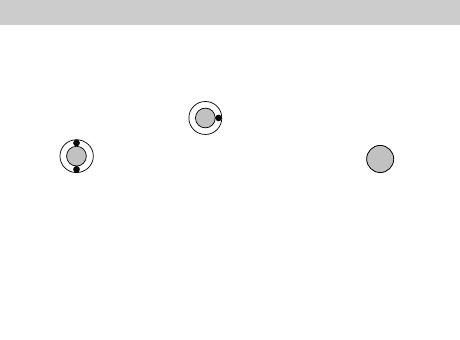
21
8 @metro App Store
With @metro App Store, you can download full featured applications over
the air including games, personalized ring tones, pictures, and more. You
can send and receive instant messages and email, or browse the web to
catch up on all the latest news.
This section outlines how to obtain games and other applications for your
phone. For more information about this function, consult your service
provider.
Accessing @metro App Store
Applications Shopping and Downloading
Download games, ring tones, e-mail, and more using the @metro App
Store. For information on airtime charges, consult your service provider.
1. In the standby mode, press to launch @metro App Store.
2. Press to select the @metro App Store, then press . Your
phone takes a moment to connect, then the @metro App Store Catalog
menu appears in the display.
The first time you access the @metro App Store, an "airtime
warning" message appears in the display along with instructions
on how to remove this message.
3. Follow the instructions in your phone's display.
Please check with your Wireless Carrier for availability of
applications.
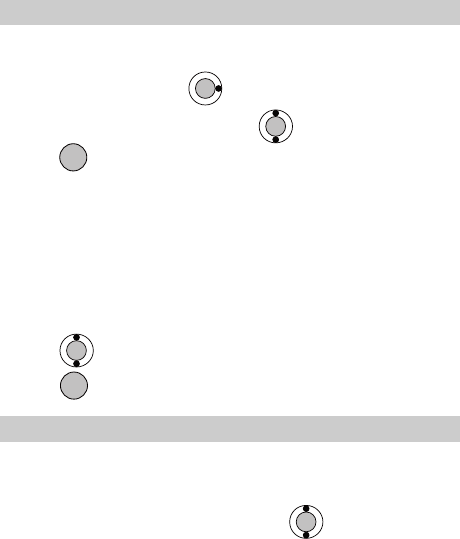
22
Changing Your @metro App Store Settings
Use the Settings menu in @metro App Store to manage, move, order
applications, and much more.
1. In the standby mode, press to launch @metro App Store.
2. At the @metro App Store menu, Press to select Settings, then
press . The following options appear in the display:
Order Apps: Download applications over the network.
Move Apps: Move previously downloaded applications between
available folders.
Manage Apps: View used and available memory.
Main Menu View: Select whether you wish to view the main @metro
App Store menu in a list or icon format.
View Log: View the @metro App Store log, which displays information
about recent activity using @metro App Store.
3. Press to select the desired option.
4. Press to enter the option's sub-menu and view or change settings.
Using On-line Help
The Help sub-menu within @metro App Store is a short tutorial on several
@metro App Store features. View information about charges, cancelling
subscriptions, buying apps, disabling apps, and more.
1. Within in the @metro App Store menu, use to select Help.

23
2. Press . The Help subjects described in the following subsections
appear in the display.
3. Use to select the desired Help subject.
4. Press to view the selected Help information.
Buying New Apps
To buy new and exciting apps, visit the @metro App Store. It provides you
with a variety of apps you can choose from.
What do I pay?
When you buy an app, you will be charged for the purchase cost of the app.
Demo Apps
A Demo app is free and is designed to demonstrate the app's main features.
It usually expires after a certain period of time or a number of uses and
often has limited functions. When you run a demo app, you will be
presented with a purchase option so you won't have to look for the app in
the @metro App Store.
Removing Apps
You may remove apps that are no longer needed. When you remove an app,
you cannot use the application unless you purchase it again. To remove an
app, choose Settings > Manage Apps. Then, select the app you want to
remove.
Disabled Apps
You can install new apps even if the memory of your phone is full by
partially removing (disabling) apps you haven't used recently. When you
24
need to use a disabled app, you can restore it at no additional purchase
cost.
Restoring Apps
Disabled apps can be quickly restored at no additional purchase cost. To
restore an app, run the application you want to restore from the main menu.
You will be guided through the restoration process.
Expired Apps
Apps that were purchased based on the number of uses or for a specified
period of time expire. You can purchase additional uses from the @metro
App Store.
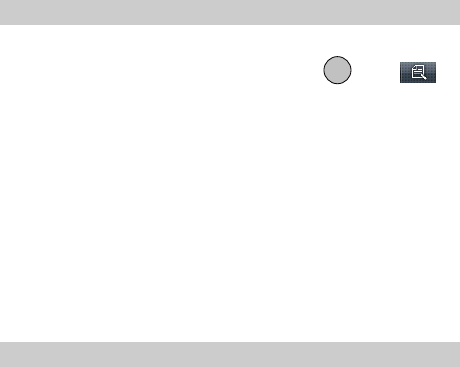
25
9 Alarm Clock
After an alarm clock is enabled, the phone notifies you at a preset time if
the phone is powered on. You can set up to five alarm clocks.
Enabling an Alarm Clock
1. Select Tools > Alarms.
2. Select an alarm clock, select Edit, and then press or tap to
set the title, time, alert cycle (days), and alert tone of the alarm clock.
3. Select On to enable the alarm clock.
4. Select Save to save the settings of the alarm clock.
When an alarm clock alerts, select Stop to stop it or select
Snooze to snooze it for five minutes.
If you perform no operation to an alarm clock that alerts, the
alarm clock stops temporarily after 45-second ringing and
alerts again five minutes later. The alarm clock alerts five
times before it stops thoroughly.
After selecting cycleing Custom, you can select the days on
which an alarm clock needs to repeat from the seven days in
a week.
Disabling an Alarm Clock
1. Select Tools > Alarms.
2. Select an alarm clock. Then select Off to disable the alarm clock, or
select Cancel All to disable all alarm clocks.
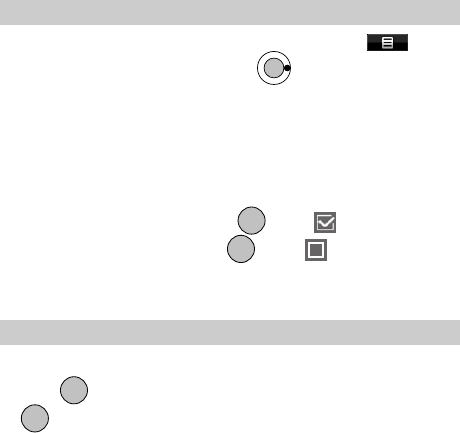
26
10 Music Player
Adding a Playlist
1. Select Music Player > Options > Music Library or tap to
access Music Library, and then press to switch to the Playlist
tab.
2. Select Options > Add New Playlist, enter the name of the playlist, and
then tap Save.
3. Tap the playlist, and then select Options > Add From My Files.
4. Tap Phone to save the playlist in the phone memory or tap Card to save
the playlist on the microSD card.
5. Scroll through the music list. Press or tap to select the songs
to be added to the playlist. (Press or tap to select the songs
to be removed from the playlist.)
6. Tap Options > Add to add the selected songs to the playlist.
Playing Music
On the main menu screen, tap Music Player to launch the media player.
Press to play a song. During playback of a song, you can press
to pause the song; press it again to resume playback.
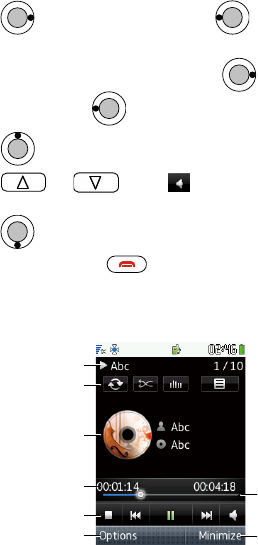
27
Press to play the next track; press to play the previous
track.
During playback of a song, press and hold to fast-forward the
song; press and hold to rewind the song.
Press to access the music library.
Press or or tap to increase or decrease the
volume.
Press to stop playing a song.
Tap Minimize or press to return to a standby screen. In this
case, the media player plays music in the background.
You can also control the music player through tapping the icons on the
player screen.
1
2
3
4
5
6
7
8
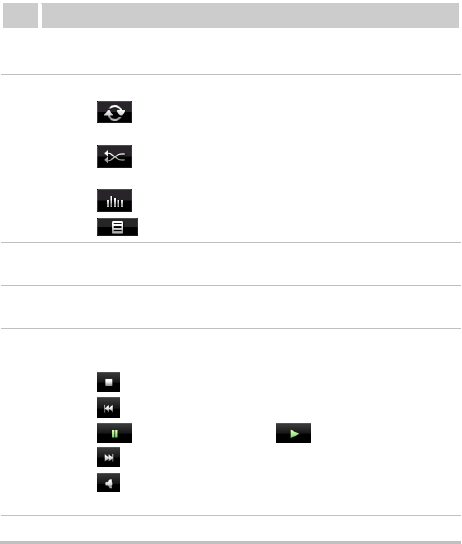
28
Description
1
Title bar, displaying the music playing status (play,pause, stop),
the name and the number of the current song.
2
Shortcut icons. You can perform the following operations:
Tap to set the phone to repeat all songs in a playlist, to
repeat the current song, or not to repeat songs.
Tap to set the phone to play songs in order or to shuffle
songs.
Tap to switch between the settings of the equalizer.
Tap to display the music library.
3
GUI style bar, you can drag the screen to select the GUI style:
Album Art, Waveform Mode, Lyric Mode.
4
Time bar, displaying the total time and the played duration of a
song.
5
Playback control icons. You can perform the following
operations:
Tap to stop playing a song.
Tap to play the previous track.
Tap to pause the song; tap to resume playback.
Tap to play the next track.
Tap to adjust the volume. You can drag the slider to adjust
the volume.
6
Options menu.

29
Description
7
Progress slider, displaying the playing progress of the current
song. You can drag the progress slider to the point that you want
the file to play.
8
When the music player is playing a song, select Minimize to
minimize the music player and return to the previous menu.
When the music player is stopped, select Back to close the
music player and return to the previous menu.
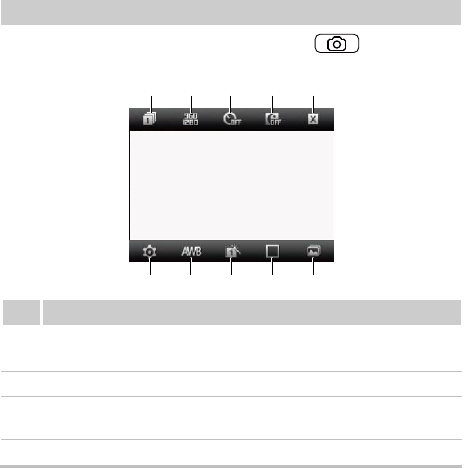
30
11 Camera
Taking a Picture
1. On the main menu screen, tap Camera or press to launch the
camera.
54321
109876
Description
1
Capture modes: Tap the icon to select the number of pictures to
be taken continuously.
2
Resolutions: Tap the icon to switch between picture resolutions.
3
Self-timer mode: Tap the icon to set the time delay of taking a
picture after the shutter release.
4
Night mode: Tap the icon to enable or disable the night mode.
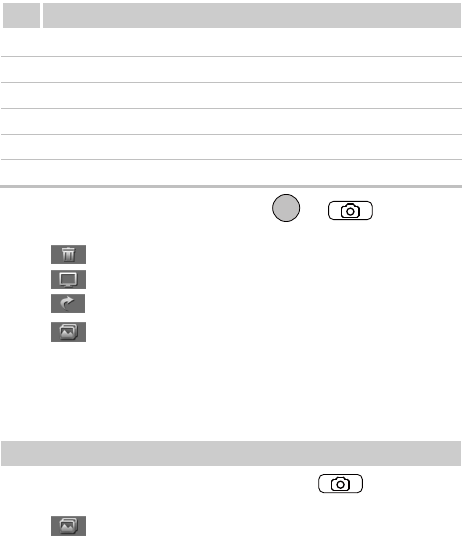
31
Description
5
Back: Tap the icon to return to the previous menu.
6
Settings: Tap the icon to access the setting menu.
7
White balance: Tap the icon to set the white balance.
8
Effects: Tap the icon to switch between the picture effects.
9
Frames: Tap the icon to switch between fun frames.
10
Album: Tap the icon to access the album.
2. Focus the camera on the scene and press or to take a
picture. Then you can preview the picture and save it.
Tap to delete the picture.
Tap to set the picture as the wallpaper or a contact image.
Tap to send the picture through the MMS or Bluetooth.
Tap to access the album.
In preview mode, you can drag up or down on the screen to
zoom out or zoom in (for the resolutions of 1280, the camera
can be neither zoomed in nor zoomed out). You can also
flick left or right to decrease or increase the brightness.
Viewing a Picture
1. On the main menu screen, tap Camera, or press to launch the
camera.
2. Tap to access the album.

32
3. Press or tap Phone (or Card) to select a storage location: phone
or microSD card.
4. Press to select a picture.
5. Tap or directly tap the desire picture to view it.
Press , or flick left or right to switch between the pictures.
Tap or tap the picture to view the picture in full screen mode.
Tap the picture again or press to exit from the full screen mode.
6. Tap Options for the following options:
Full Screen: View the picture in full screen mode.
Slide Show: Play all pictures as a slide show.
Rotate: Rotate the picture.
Set as: Set the picture as the wallpaper or a contact image.
Send: Send the picture through the MMS or Bluetooth.
Delete: Delete the picture.
File Info: View the name, size, creation date, and resolution of the
picture.
7. Select Back to return to the picture list.
You can also tap Multimedia > My Images to select a storage
location (phone or microSD card), and then view the
corresponding pictures.
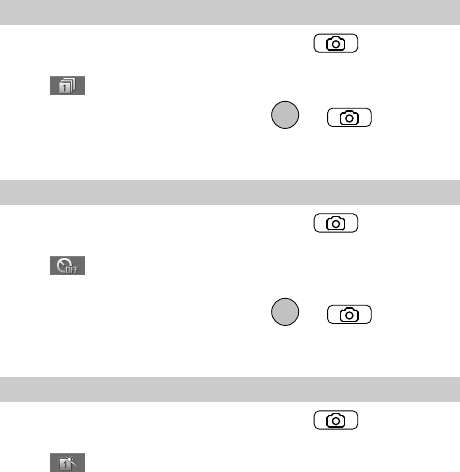
33
Taking Pictures Sequentially
1. On the main menu screen, tap Camera or press to launch the
camera.
2. Tap to select to take a succession of four or nine pictures.
3. Focus the camera on the scene and press or to take
pictures. The phone will take a preset number of pictures sequentially
and then save them automatically.
Taking a Picture in Self-Timer Mode
1. On the main menu screen, tap Camera or press to launch the
camera.
2. Tap to switch between the 5-second and 10-second self-timer
modes.
3. Focus the camera on the scene and press or . Then the
phone will take a picture after a preset countdown and then save it
automatically.
Setting a Picture Effect
1. On the main menu screen, tap Camera or press to launch the
camera.
2. Tap to switch between the picture effects.

34
12 Security
Enabling or Disabling the Phone Lock
The phone lock protects your phone from unauthorized use. By default, the
phone lock is not enabled. You can change the default phone lock code
(0000) to any numeric string of 1 to 8 digits.
1. Select Settings > Security Settings > Phone Lock.
2. Select one of the following phone lock modes:
5 Minutes, 10 Minutes, 15 Minutes, 30 Minutes or 60 Minutes: Set
the keypad to be locked after the phone is in standby mode for 5
minutes, 10 minutes, 15 minutes, 30 minutes or 60 minutes.
Immediate: Enable the phone lock immediately.
Power On: Enable the phone lock when the phone is powered on next
time.
Off: Disable the phone lock.
Changing the Phone Lock Code
Do remember your phone lock code. If you forget it, contact your local
dealer.
1. Select Settings > Security Settings > Change Phone Code.
2. Enter the correct phone lock code and select OK.
3. Enter the new phone lock code and select OK.
4. Enter the new phone lock code again and select OK.

35
Locking the Keypad
When the keypad is locked, you can still answer incoming calls by
pressing or tapping .
Manually Locking the Keypad
To avoid misoperations, you can tap on the standby screen to lock
the keypad.
Automatically Locking the Keypad
If the auto keyguard function is enabled, after the phone is idle for a preset
period of time in standby mode, the keypad is locked automatically.
1. Select Settings > Phone Settings > Auto Keyguard.
2. Select one of the following options:
Off: Disable the auto keyguard function.
15 Seconds, 30 Seconds, or 1 Minute: Set the keypad to be locked after
the phone is idle for 15 seconds, 30 seconds, or one minute.
Unlocking the Keypad
When the touchscreen is locked, drag the round button in the scroll bar at
the bottom of the screen from left to right to unlock the keypad.

36
13 Bluetooth Connection
Your phone supports Bluetooth wireless connections. Through Bluetooth,
you can set up wireless connections between your phone and other
Bluetooth-compatible devices to exchange data.
Bluetooth wireless connections can be set up between the devices within a
maximum range of 10 meters, however, the connections can be disturbed
by other electronic devices or blocked by obstacles such as walls.
In certain areas, the use of Bluetooth devices might be
restricted or prohibited. Observe local laws and regulations.
Do not accept the connection request of an unknown device.
Thus you can prevent your mobile phone from the intrusion
of harmful contents.
Sending Data Through a Bluetooth Connection
1. To enable the Bluetooth function, Select Connections > Bluetooth >
Power On.
2. Launch the application that saves the contents to be sent. For example,
if you want to send a picture to another device, you need to launch the
Multimedia application.
3. Select the contents you want to send. Then select Options > Send >
Send via Bluetooth.
If the Bluetooth function is not enabled yet, the phone will ask
you whether to enable the function.
4. After accessing Device List, you need to select the device to be
connected from the list.

37
You can set up only one Bluetooth connection each time.
If the device list contains the devices that are already paired
with your phone, select the desired device to send data.
When the device list is empty or the device to be connected
to is not in the list, select Search to search for other
Bluetooth-enabled devices in the effective range. The names
of the found devices will be displayed on the screen. Select
Back to stop searching.
5. Select Options > Send to send the contents through Bluetooth. If the
other Bluetooth device requires verification before the connection,
create a pairing password that is to be used together with the other party.
After both parties enter the same password, the Bluetooth connection
can be set up.
6. After the connection is set up, information about the data being
transmitted is displayed on the screen.
Receiving Data Through a Bluetooth
Connection
1. When another device sends data to your phone through Bluetooth, the
phone asks you whether to receive the data. Select Yes to receive the
data. The filename and the receiving progress are displayed on the
screen. Select No to reject the data.
When your phone sets up a Bluetooth connection with another
device for the first time, you need to enter the password for
pairing your phone with the Bluetooth device. After the other
party enters the same password, your phone begins to receive
data.

38
2. After the phone prompts you that the data is received, the data is
automatically saved to Multimedia.
If a microSD card is installed on your phone, the phone saves
the received data to the microSD card by default; otherwise, the
phone saves the received data to the phone memory.
Listening to Music Through a Bluetooth Stereo
Headset
You can listen to music on the phone through a Bluetooth stereo headset.
1. On a main menu screen, tap Music player to launch the music player.
Then power on your Bluetooth headset for pairing.
2. Select Options > Play via Bluetooth, the phone access Device List.
3. Select Search to search for Bluetooth-compatible devices. In the list of
newly found devices, select the corresponding Bluetooth headset. Then
select Options > Connect to access the screen for pairing devices.
4. Enter the password for pairing the Bluetooth headset and select OK.
5. After the phone sets up the Bluetooth connection, you can listen to
music through the Bluetooth stereo headset.
If the Bluetooth function is not enabled yet, the phone will
ask you whether to enable the function.
After your phone is connected to a Bluetooth headset, music,
voice broadcast messages, and navigation voice messages
are played through the headset.

39
Sending a Contact Through a Bluetooth
Connection
Your phone can send a contact through Bluetooth.
1. In standby mode, select Contacts > Contacts to access the contact list.
2. Select a contact to be sent, and then select Options > Send Vcard >
Bluetooth.
3. Select Search to search for Bluetooth-compatible devices. In the list of
newly found devices, select the corresponding Bluetooth headset. Then
select Options > Send to access the screen for pairing devices.
4. Enter the pairing password, and then select OK.
5. After the Bluetooth connection is set up, the phone begins to send the
contact.
Other Bluetooth Operations
Power On/Off: Enable or disable the Bluetooth function.
Search New Devices: Search for Bluetooth-compatible devices.
Device List: View all paired Bluetooth devices.
My Device Properties: View the name, visibility, hardware address,
type, and supported mode of the phone.
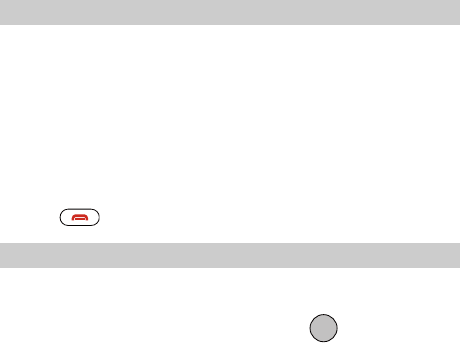
40
14 TTY Operation
Using the TTY Device
The Teletypewriter (TTY) is a typewriting device. By connecting the
phone to the TTY device, you can use the TTY functions to send/receive
messages.
When you use the TTY function, do as follows:
1. Set the phone to the TTY mode and connect the TTY device to the
headset jack of the phone.
2. Make or answer calls as normal.
3. When the call is put through, use the TTY device to send or receive the
letters.
4. Press or select End to end the call.
Setting the TTY Mode
1. On a main menu screen, Select Settings > Phone Settings > TTY
Setup.
2. Select the TTY mode, and then press Select or to confirm.
Voice: The standard voice speaking mode and the listening mode.
TTY: Transmit and receive the TTY characters.
VCO: Receive TTY characters but transmit by speaking into the
microphone.
HCO: Transmit TTY characters but receive by listening to the earpiece.
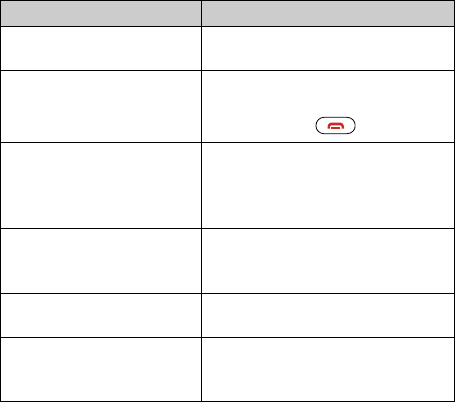
41
15 Troubleshooting
If you encounter any problem when using your phone, try to rectify the
problem according to the following table. If the problem persists, contact
the service provider or the dealer.
Problem
Ensure that…
The battery cannot be charged.
The charger is properly connected to
your phone and the power socket.
The phone cannot be powered
on.
The battery power is sufficient.
The battery is properly installed.
Press and hold .
You cannot make a call except
an emergency call.
The phone number is correct.
You are in the network service area.
You have not enabled the call
restriction function.
Bad call quality.
The signal strength is strong enough.
If you are staying indoors, move
close to a window.
During a call, the other side
cannot hear your voice.
The microphone is not covered.
The signal strength is not
strong enough or your phone is
often off line.
The antenna is in a good condition.
Move close to a place with strong
signal strength.

42
Problem
Ensure that…
Your phone displays "No
service found", "Service
unavailable" or "Network
problem".
You are not in an area with weak
magnetic field (in a tunnel or
surrounded by buildings). If so, move
to another area and try again.
Do not visit the service option
without obtaining authorization from
your service provider.
43
16 Warnings and Precautions
This section contains important information pertaining to the operating
instructions of your device. It also contains information about how to use
the device safely. Read this information carefully before using your device.
Electronic Device
Power off your device if using the device is prohibited. Do not use the
device when using the device causes danger or interference with electronic
devices.
Medical Device
Follow rules and regulations set forth by hospitals and health care
facilities. Do not use your device when using the device is prohibited.
Pacemaker manufacturers recommend that a minimum distance of 15
mm be maintained between a device and a pacemaker to prevent
potential interference with the pacemaker. If you are using a pacemaker,
use the device on the opposite side of the pacemaker and do not carry
the device in your front pocket.
Potentially Explosive Atmosphere
Power off your device in any area with a potentially explosive atmosphere,
and comply with all signs and instructions. Areas that may have potentially
explosive atmospheres include the areas where you would normally be
advised to turn off your vehicle engine. Triggering of sparks in such areas
could cause an explosion or a fire, resulting in bodily injuries or even
deaths. Do not power on your device at refueling points such as service
stations. Comply with restrictions on the use of radio equipment in fuel
depots, storage, and distribution areas, and chemical plants. In addition,
44
adhere to restrictions in areas where blasting operations are in progress.
Before using the device, watch out for areas that have potentially explosive
atmospheres that are often, but not always, clearly marked. Such locations
include areas below the deck on boats, chemical transfer or storage
facilities, and areas where the air contains chemicals or particles such as
grain, dust, or metal powders. Ask the manufacturers of vehicles using
liquefied petroleum gas (such as propane or butane) whether this device
can be safely used in their vicinity.
Traffic Security
Observe local laws and regulations while using the device. In addition, if
using the device while driving a vehicle, comply with the following
guidelines:
Concentrate on driving. Your first responsibility is to drive safely.
Do not talk on the device while driving. Use hands-free accessories.
When you have to make or answer a call, park the vehicle at the road
side before using your device.
RF signals may affect electronic systems of motor vehicles. For more
information, consult the vehicle manufacturer.
In a motor vehicle, do not place the device over the air bag or in the air
bag deployment area. Otherwise, the device may hurt you owing to the
strong force when the air bag inflates.
Do not use your device while flying in an aircraft. Power off your
device before boarding an aircraft. Using wireless devices in an aircraft
may cause danger to the operation of the aircraft and disrupt the
wireless telephone network. It may also be considered illegal.
Operating Environment
Do not use or charge the device in dusty, damp, and dirty places or
places with magnetic fields. Otherwise, it may result in a malfunction of
the circuit.
45
The device complies with the RF specifications when the device is used
near your ear or at a distance of 1.5 cm from your body. Ensure that the
device accessories such as a device case and a device holster are not
composed of metal components. Keep your device 1.5 cm away from
your body to meet the requirement earlier mentioned.
On a stormy day with thunder, do not use your device when it is being
charged, to prevent any danger caused by lightning.
When you are on a call, do not touch the antenna. Touching the antenna
affects the call quality and results in increase in power consumption. As
a result, the talk time and the standby time are reduced.
While using the device, observe the local laws and regulations, and
respect others' privacy and legal rights.
Keep the ambient temperature between 0 °C and 40 °C while the device
is being charged. Keep the ambient temperature between 0 °C to 40 °C
for using the device powered by a battery.
Prevention of Hearing Damage
Using a headset at high volume can damage your hearing. To reduce the
risk of damage to hearing, lower the headset volume to a safe and
comfortable level.
Safety of Children
Comply with all precautions with regard to children's safety. Letting the
child play with your device or its accessories, which may include parts that
can be detached from the device, may be dangerous, as it may present a
choking hazard. Ensure that small children are kept away from the device
and accessories.
46
Accessories
Use the accessories delivered only by the manufacturer. Using accessories
of other manufacturers or vendors with this device model may invalidate
any approval or warranty applicable to the device, result in the
non-operation of the device, and cause danger.
Battery and Charger
Unplug the charger from the electrical plug and the device when not in
use.
The battery can be charged and discharged hundreds of times before it
eventually wears out. When the standby time and the talk time are
shorter than the normal time, replace the battery.
Use the AC power supply defined in the specifications of the charger.
An improper power voltage may cause a fire or a malfunction of the
charger.
Do not connect two poles of the battery with conductors, such as metal
materials, keys, or jewelries. Otherwise, the battery may be
short-circuited and may cause injuries and burns on your body.
Do not disassemble the battery or solder the battery poles. Otherwise, it
may lead to electrolyte leakage, overheating, fire, or explosion.
If battery electrolyte leaks out, ensure that the electrolyte does not touch
your skin and eyes. When the electrolyte touches your skin or splashes
into your eyes, wash your eyes with clean water immediately and
consult a doctor.
If there is a case of battery deformation, color change, or abnormal
heating while you charge or store the battery, remove the battery
immediately and stop using it. Otherwise, it may lead to battery leakage,
overheating, explosion, or fire.
If the power cable is damaged (for example, the cord is exposed or
broken), or the plug loosens, stop using the cable at once. Otherwise, it
may lead to an electric shock, a short circuit of the charger, or a fire.
47
Do not dispose of batteries in fire as they may explode. Batteries may
also explode if damaged.
Danger of explosion if battery is incorrectly replaced. Recycle or
dispose of used batteries according to the local regulations or reference
instruction supplied with your device.
Cleaning and Maintenance
The device, battery, and charger are not water-resistant. Keep them dry.
Protect the device, battery, and charger from water or vapor. Do not
touch the device or the charger with a wet hand. Otherwise, it may lead
to a short circuit, a malfunction of the device, and an electric shock to
the user.
Do not place your device, battery, and charger in places where they can
get damaged because of collision. Otherwise, it may lead to battery
leakage, device malfunction, overheating, fire, or explosion.
Do not place magnetic storage media such as magnetic cards and floppy
disks near the device. Radiation from the device may erase the
information stored on them.
Do not leave your device, battery, and charger in a place with an
extreme high or low temperature. Otherwise, they may not function
properly and may lead to a fire or an explosion. When the temperature is
lower than 0°C , performance of the battery is affected.
Do not place sharp metal objects such as pins near the earpiece. The
earpiece may attract these objects and hurt you when you are using the
device.
Before you clean or maintain the device, power off the device and
disconnect it from the charger.
Do not use any chemical detergent, powder, or other chemical agents
(such as alcohol and benzene) to clean the device and the charger.
Otherwise, parts of the device may be damaged or a fire can be caused.
48
You can clean the device and the charger with a piece of damp and soft
antistatic cloth.
Do not dismantle the device or accessories. Otherwise, the warranty on
the device and accessories is invalid and the manufacturer is not liable
to pay for the damage.
Emergency Call
You can use your device for emergency calls in the service area. The
connection, however, cannot be guaranteed in all conditions. You should
not rely solely on the device for essential communications.
Certification Information (SAR)
This device meets guidelines for exposure to radio waves.
Your device is a low-power radio transmitter and receiver. As
recommended by international guidelines, the device is designed not to
exceed the limits for exposure to radio waves. These guidelines were
developed by the independent scientific organization International
Commission on Non-Ionizing Radiation Protection (ICNIRP) and include
safety measures designed to ensure safety for all users, regardless of age
and health.
The Specific Absorption Rate (SAR) is the unit of measurement for the
amount of radio frequency energy absorbed by the body when using a
device. The SAR value is determined at the highest certified power level in
laboratory conditions, but the actual SAR level of the device when being
operated can be well below the value. This is because the device is
designed to use the minimum power required to reach the network.
The SAR limit adopted by USA and Canada is 1.6 watts/kilogram (W/kg)
averaged over one gram of tissue. The highest SAR value reported to the
FCC and IC for this device type when tested for use at the ear is 1.11 W/kg,
and when properly worn on the body is 0.838 W/kg.
49
FCC Statement
This equipment has been tested and found to comply with the limits
for a Class B digital device, pursuant to Part 15 of the FCC Rules.
These limits are designed to provide reasonable protection against
harmful interference in a residential installation. This equipment
generates, uses and can radiate radio frequency energy and, if not
installed and used in accordance with the instructions, may cause
harmful interference to radio communications. However,there is no
guarantee that interference will not occur in a particular installation.If
this equipment does cause harmful interference to radio or television
reception,which can be determined by turning the equipment off and
on, the user is encouraged to try to correct the interference by one or
more of the following measures:
--Reorient or relocate the receiving antenna.
--Increase the separation between the equipment and receiver.
-- Connect the equipment into an outlet on a circuit different from that
to which the receiver is connected.
-- Consult the dealer or an experienced radio/TV technician for help.
This device complies with Part 15 of the FCC Rules. Operation is subject
to the following two conditions: (1) this device may not cause harmful
interference, and (2) this device must accept any interference received,
including interference that may cause undesired operation.
Warning: Changes or modifications made to this device not expressly
approved by Huawei Technologies Co., Ltd. may void the FCC
authorization to operate this device.
50
Hearing Aid Compatibility (HAC) regulations for
Mobile phones
In 2003, the FCC adopted rules to make digital wireless telephones
compatible with hearing aids and cochlear implants. Although analog
wireless phones do not usually cause interference with hearing aids or
cochlear implants, digital wireless phones sometimes do because of
electromagnetic energy emitted by the phone's antenna, backlight, or other
components.
Your phone is compliant with FCC HAC regulations (ANSI C63.19).
While some wireless phones are used near some hearing devices (hearing
aids and cochlear implants), users may detect a buzzing, humming, or
whining noise.
Some hearing devices are more immune than others to this interference
noise, and phones also vary in the amount of interference they generate.
The wireless telephone industry has developed a rating system for wireless
phones, to assist hearing device users find phones that may be compatible
with their hearing devices. Not all phones have been rated. Phones that are
rated have the rating on their box or a label located on the box. The ratings
are not guarantees. Results will vary depending on the user's hearing
device and hearing loss. If your hearing device happens to be vulnerable to
interference, you may not be able to use a rated phone successfully. Trying
out the phone with your hearing device is the best way to evaluate it for
your personal needs.
M-Ratings: Phones rated M3 or M4 meet FCC requirements and are likely
to generate less interference to hearing devices than phones that are not
labeled.M4 is the better/higher of the two ratings.
T-Ratings: Phones rated T3 or T4 meet FCC requirements and are likely to
be more usable with a hearing device’s telecoil (“T Switch” or “Telephone

51
Switch”) than unrated phones. T4 is the better/higher of the two ratings.
(Note that not all hearing devices have telecoils in them.) Hearing devices
may also be measured.
Your phone meets the M4/T3 level rating.Hearing devices may also be
rated. Your hearing device manufacturer or hearing health professional
may help you find this rating.
For more information about the FCC Hearing Aid Compatibility please go
to
http://www.fcc.gov/cgb/dro
52
17 Futurewei Technologies, Inc.
Limited Warranty
Futurewei Technologies, Inc. (“Huawei”) represents and warrants to
the original purchaser (“Purchaser”) that Huawei’s phones and
accessories (“Product”) are free from material defects, including
improper or inferior workmanship, materials, and design, during the
designated warranty period, and subject to the following terms and
conditions, when used normally and in accordance with all
operating instructions:
1. Warranty Period: Coverage under this warranty is limited to the
following time periods:
a) Phone: a period of 12 months from the date of purchase.
b) Battery and Charger: a period of 12 months from the date of
purchase.
c) Other accessories (If included in the box set): a period of 3
months from the date of purchase.
2. This limited warranty only applies to products manufactured by
or for Huawei and that can be identified by the “Huawei”
trademark, trade name, or logo affixed to them. The limited
warranty does not apply to any non-Huawei products or
software.
3. The Warranty extends only to Purchasers who purchased the
53
Product in the United States of America and is not assignable or
transferable to any subsequent purchaser/customer.
4. During the limited warranty period, Huawei will repair or replace
at Huawei’s sole option, any parts of the Product that are
defective or malfunction during normal usage. Huawei reserves
the right to use new or refurbished replacement parts in repair of
the Product.
5. This limited warranty covers only the costs of parts and labor.
Other related costs such as shipping and delivery costs may be
born by purchaser at Huawei’s option.
6. At Huawei’s request, Purchaser must prove the date of the
original purchase of the Product by a dated bill of sale or dated
itemized receipt.
7. This warranty does not cover damage resulting from:
a) Abuse, accident, misuse, improper storage, exposure to liquid,
moisture, or dampness;
b) External causes such as from collision, fire, flooding, sand, dirt,
windstorm, lightning, or earthquake;
c) Exposure to extreme weather conditions, Acts of God, theft,
blown fuse, or improper use of any electrical source;
d) Computer or internet viruses, bugs, worms, Trojan Horses,
cancelbots;
e) Use with non-Huawei products or products not recommended
54
for use with Huawei products;
f) normal wear and tear of the equipment;
g) Usage of equipment other than its normal and customary
manner;
h) Improper testing, operation, maintenance, installation, or any
alteration or modification of Product;
i) Consumable parts, such as batteries, unless damage has
occurred due to a defect in Huawei materials and workmanship;
j) Service performed by anyone who is not a Huawei
representative or an authorized Huawei service provider;
k) Other acts which are not the fault of Huawei, including damage
caused by shipping;
l) Cosmetic damages, including but not limited to dents or
scratches in decorative, structural, or non-operative parts
resulting from normal customer use;
m) Spillage of food or liquid, corrosion, rust or incorrect voltage;
and
n) The defective function of the cellular system or inadequate
signal reception by the external antenna, or viruses or other
software problems introduced into the Product.
8. Huawei does not warrant that the operation of this product will
be uninterrupted or error-free.
9. This warranty will also be null and void in any of the following
events:
a) The serial number or warranty seal on the equipment has been
altered, defaced or removed;

55
b) Any term contained in this warranty has been altered or
modified in any way without prior written consent of Huawei;
c) Huawei has not been notified by Purchaser of the alleged
defect or malfunction of the Product during the applicable
warranty period.
10. If Product is returned to Huawei after the expiration of the
warranty period, Huawei's normal service policies shall apply
and Purchaser will be charged accordingly.
a) Huawei assumes no obligation or liability beyond that which is
expressly provided for in this limited warranty.
b) All warranty information, pricing, product features and
specifications are subject to change.
11. This limited warranty provides Purchaser’s sole and exclusive
remedy to be provided by Huawei. The agents, employees,
distributors, and dealers of Huawei products are not authorized
to make modifications to this limited warranty, or make
additional warranties binding on Huawei.
LIMIT OF LIABILITY
12. HUAWEI’S LIMIT OF LIABILITY UNDER THIS LIMITED
WARRANTY SHALL BE THE ACTUAL CASH VALUE OF THE
PRODUCT AT THE TIME PURCHASER RETURNS THE PRODUCT
FOR REPAIR, AS DETERMINED BY THE PRICE PAID BY THE
PURCHASER FOR THE PRODUCT LESS A REASONABLE
AMOUNT OF USAGE. HUAWEI SHALL NOT BE LIABLE FOR

56
ANY OTHER LOSSES OR DAMAGES SUCH AS SPECIAL,
INCIDENTAL, CONSEQUENTIAL, OR PUNITIVE DAMAGES
(INCLUDING BUT NOT LIMITED TO LOSS OF ANTICIPATED
BENEFITS OR PROFITS, LOSS OF SAVINGS OR REVENUE,
LOSS OF DATA, LOSS OF USE OF THE PRODUCT OR ANY
ASSOCIATED EQUIPMENT, COST OF CAPITAL, COST OF ANY
SUBSTITUTE EQUIPMENT OR FACILITIES, DOWNTIME, ANY
COSTS OF RECOVERING, REPROGRAMMING, OR
REPRODUCING ANY PROGRAM OR DATA, ANY FAILURE TO
MAINTAIN THE CONFIDENTIALITY OF DATA STORED ON THE
PRODUCT, THE CLAIMS OF ANY THIRD PARTIES, INCLUDING
SUBSEQUENT PURCHASERS, AND INJURY TO PROPERTY,
RESULTING FROM THE PURCHASE OR USE OF THE PRODUCT
OR ARISING FROM BREACH OF THIS WARRANTY, BREACH OF
CONTRACT, NEGLIGENCE, STRICT LIABILITY, OR ANY OTHER
LEGAL OR EQUITABLE THEORY, EVEN IF HUAWEI KNEW OF
THE LIKELIHOOD OF SUCH DAMAGES). HUAWEI SHALL NOT
BE LIABLE FOR DELAY IN RENDERING SERVICE UNDER THE
LIMITED WARRANTY, OR LOSS OF USE DURING THE PERIOD
THAT THE PRODUCT IS BEING REPAIRED.
DISCLAIMER OF WARRANTY
13. HUAWEI’S LIABILITY UNDER EITHER THE IMPLIED WARRANTY
OF MERCHANTABILITY OR FITNESS FOR A PARTICULAR
PURPOSE, SHALL BE LIMITED TO THE DURATION OF THE
FOREGOING LIMITED WRITTEN WARRANTY. OTHERWISE, THE
FOREGOING LIMITED WARRANTY IS PURCHASER’S SOLE AND

57
EXCLUSIVE REMEDY AND IS IN LIEU OF ALL OTHER
WARRANTIES, EXPRESS OR IMPLIED.
14. Some states do not allow exclusion or limitation of incidental,
consequential, or punitive damages, or permit limitations on the
length of implied warranties, so certain of these warranty
limitations may not apply to Purchaser. This limited warranty
gives Purchaser specific legal rights; Purchaser may also have
other rights which vary from state to state. If any term of this
limited warranty is held to be illegal or unenforceable, the legality
or enforceability of the remaining terms shall not be affected or
impaired.
15. This limited warranty allocates risk of Product failure between
Purchaser and Huawei, and Huawei’s Product pricing reflects
this allocation of risk and the limitations of liability contained in
this limited warranty.
Contact Huawei
WEB SITE: HTTP://WWW.HUAWEIDEVICE.COM
EMAIL: SUPPORTUSA@HUAWEI.COM
* This contact information may change without notice.
Please contact your authorized Huawei retailer for updated
contact information.
* By selecting a rate plan and activating your phone, you
agree to the MetroPCS Terms and Conditions of Service
available at metropcs.com.
58
Version: V100R001C45_01 Part Number: 31010EJH